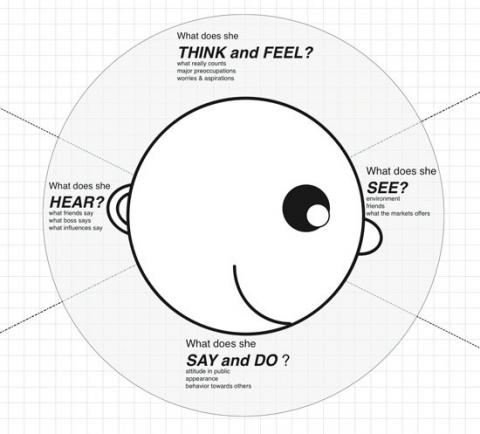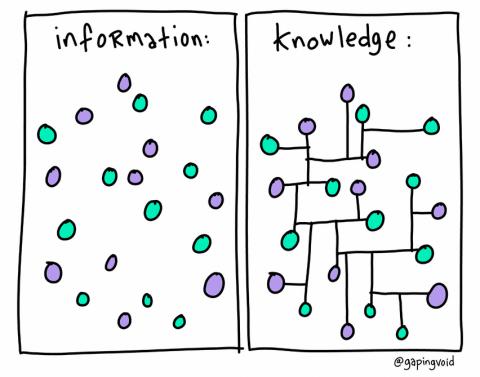Using Empathy Canvas in Knowledge Management

When you are creating your training material, certification or any documentation, also you have to consider how your Audience feel about your content.
Your learners are your final customers, are the persons that consumes your product. Use Design Thinking to get an expected result for your audience.
After developing a course, after doing the release, is important to get feedback and create action items to follow up and deliver an exceptional learning.
Of my favorite techniques is do a post-analysis about the audience.
One of the advantages of e-Learning is to use Multimedia to deliver an Idea and create engagement.
Involving other people creates a more realistic outcome. The empathy map becomes more accurate if it is completed taking into account what salespeople see, what communicators listen as feedback and what designers have in mind when sketching for this targeted persona.
Try to get feedback by answering this questions (let's begin on the left):
– What do they hear?
Describe how the environment influences your learners. What do other learners say? Which multimedia channels are influential? You can add links to websites they might frequently visit.
– What do they really think and feel?
Imagine their emotions, what moves them in the company? What might keep them up at night? Describe their dreams and aspirations.
– What do they see?
Describe what your learners sees in their environment. What does it look like? Who surrounds them? In this case, images speak louder than post-its! Take advantage of your empathy map and use images that convey meaning. If you are developing content for a WorkTeam, Analyze the personality of that team.
– What do they say and do?
In this section, try to imagine what the learner says or how they behave in public. What could they tell other people? Try to capture specific quotes or unusual phrases you might remember from your learner.
– Pain: what are their biggest frustrations?
What obstacles stand in their way during training? which risks might they fear taking?
– Gain: What do they need to achieve?
How do they measure success of a training?
When the map is full, try to identify needs. Create a list outside the map. Needs are activities and desires with which your user could use help, so it is better to use verbs to describe them. Needs may arise directly from what you noticed or from contradictions between the sections in your empathy map.
After that, analyze if on the course or your training material covers those needs.
The Empathy Canvas (or Empathy Map) is great to create products, services and material for your customers needs. In Learning and Development, your customers are the learners.
An available canvas version is available for download in this url.

